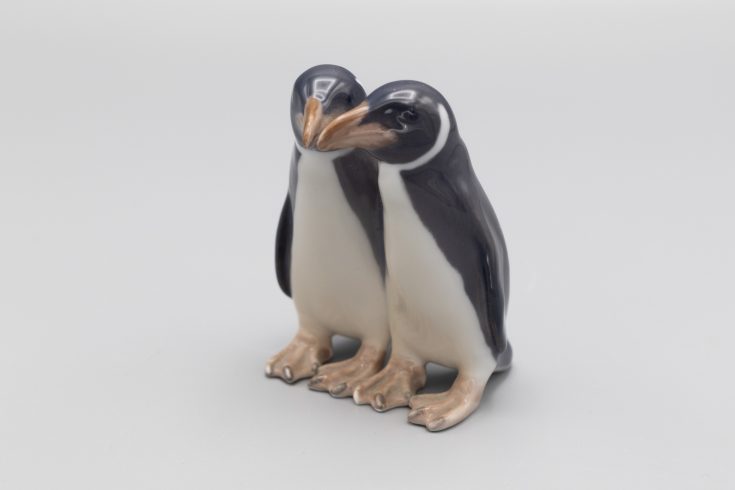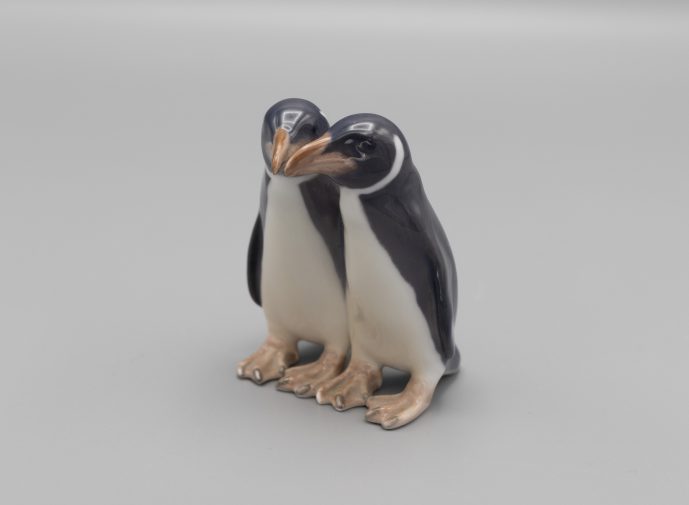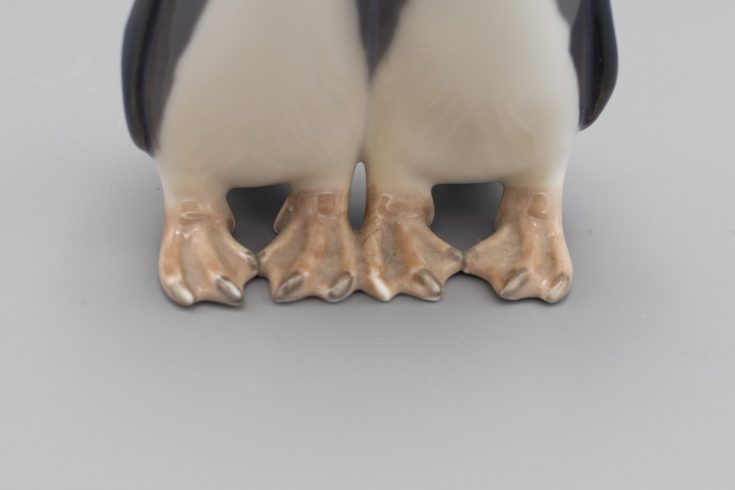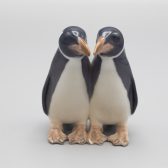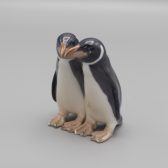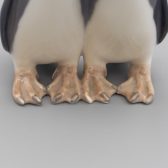
Pair of Royal Copenhagen Porcelain Penguins
Royal Copenhagen is the oldest and most respected manufacturer of porcelain in Denmark. The company gas been making porcelain since 1775. The 18th century was the pinnacle in porcelain for blue painting. At that time and previously, European factories looked to China in order to emulate their porcelain and to gain inspiration.
In the 18th century, Royal Copenhagen adapted a factory mark which consists of 3 wavy lines. These lines symbolize Denmark’s three straights – Storebaelt, Lillebaelt, and Oresund. Over the years, the firm acquired Georg Jensen in 1972 and Bing and Grondahl in 1987. Royal Copenhagen is renowned for its timeless design, outstanding quality, and meticulously crafted porcelain.
A lovely pair of Royal Copenhagen Porcelain Penguins number 1190. They were modelled by Anna Trapp and were introduced circa 1910. Anna Trapp only modelled 3 compositions and all of them were penguins. The year that the penguins were produced is indicated by dots and dashes above or below the letters on the base.
Our pair of Porcelain Penguins were made in the mid 20th century. The penguins have a white chest with a gray back and head. The penguins turns their beaks up proudly, while their heads are held slightly aloft and away from their body. A soft pink color distinguishes the beak. The penguin’s feet are placed together and are slightly pink. Their nails are gray and the tail is cut at the tip, and rests on the ground. On the bottom of the penguin’s feet, there are marks of a Crown and the number 1190.
